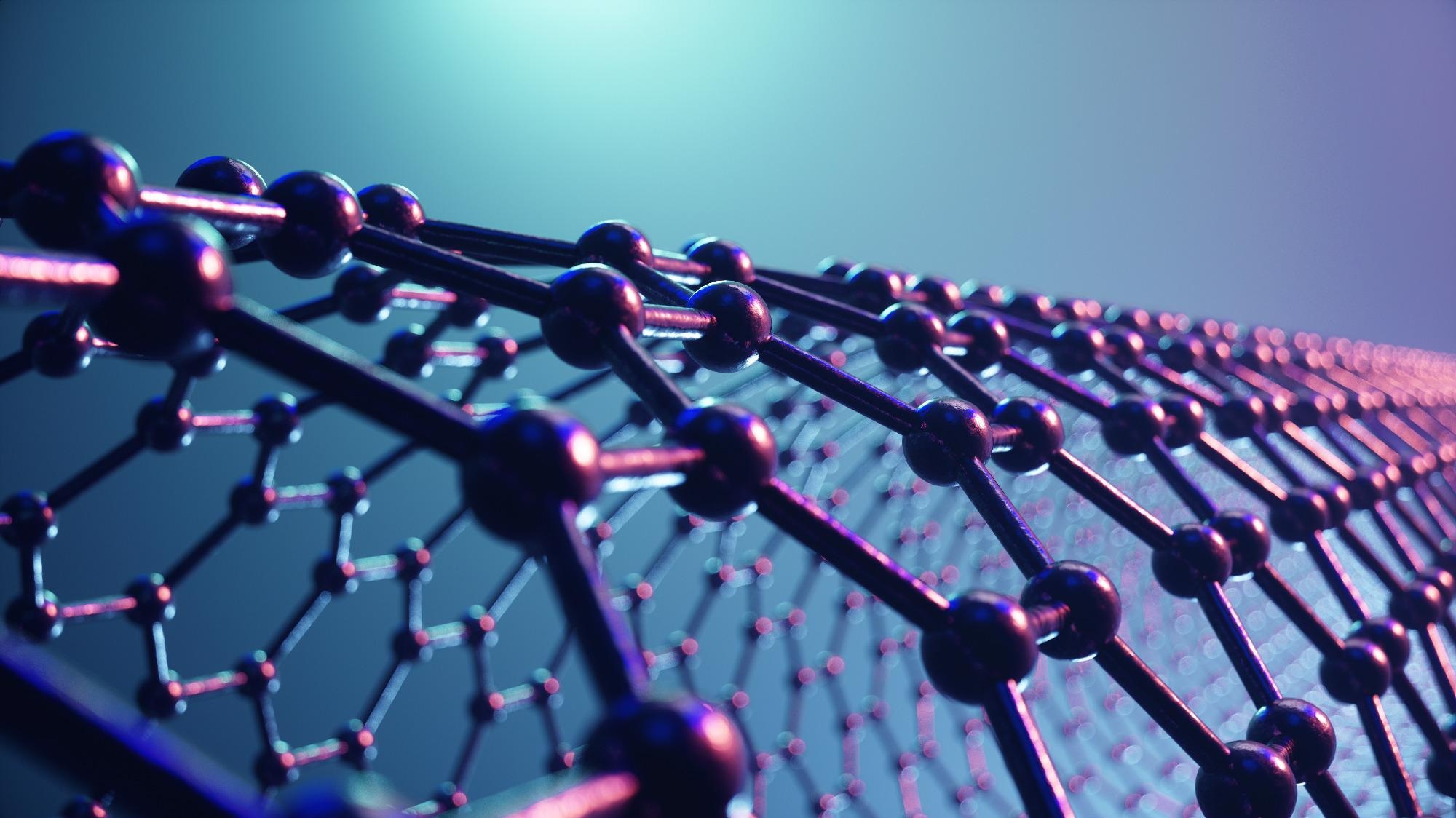Mar 11 2021
Specific, effective, with a non-harmful and reversible action: the identikit of the ultimate biomaterial appears to match with graphene flakes.

Image Credit: Rost9/shutterstock.com
Graphene flakes are the topic of a new research work performed by SISSA (International School for Advanced Studies of Trieste), Catalan Institute of Nanoscience and Nanotechnology (ICN2) of Barcelona, and the National Graphene Institute of the University of Manchester, as part of the European Graphene Flagship project.
It has been demonstrated that this specific nanomaterial has the potential to interact with the workings of the nervous system in vertebrates in a highly specific way, disrupting the development of a pathological process that results in anxiety-related behavior.
“We previously showed that when graphene flakes are delivered to neurons they interfere spontaneously with excitatory synapses by transiently preventing glutamate release from presynaptic terminals” stated Laura Ballerini from SISSA, the leader of the research team that performed the study titled, “Graphene oxide prevents lateral amygdala dysfunctional synaptic plasticity and reverts long lasting anxiety behavior in rats.”
The study was recently published in the Biomaterials journal and was co-authored by Audrey Franceschi Biagioni, Giada Cellot, Elisa Pati, Neus Lozano, Belén Ballesteros, Raffaele Casani, Norberto Cysne Coimbra and Kostas Kostarelos.
Ballerini continued, “We investigated whether such a reduction in synaptic activity was sufficient to modify related behaviours, in particular the pathological ones that develop due to a transient and localised hyper-function of excitatory synapses.”
This method would strengthen the approach of transient and selective targeting of synapses to inhibit the development of brain pathologies through the supposed precise medicine treatments.
Behavioral Analysis
To validate this theory, the researchers targeted post-traumatic stress disorder (PTSD) and performed the experiments in two phases—that is, in vitro and in vivo.
We analysed defensive behaviours caused in rats by the presence of a predator, using the exposure to cat odour, to induce an aversive memory. If exposed to the predator odour, the rat has a defensive response, holing up, and this experience is so well-imprinted in the memory, that when the animal is placed in the same context even six days later, the animal remembers the odour of the predator and acts the same protective behaviour.
Audrey Franceschi Biagioni, Study First Author, SISSA
Biagioni continued, “This is a well-known and consolidated model, that we used to reproduce a stress behaviour. Exposure to the predator can modify neuronal connections—a phenomenon that is technically known as plasticity—and increases synaptic activity in a specific area of the amygdala that therefore represented the target of our study to test the effects of the nanomaterial.”
We hypothesised that graphene flakes that we showed to temporarily inhibit excitatory synapses (without causing inflammation, damage to neurons or other side effects) could be injected in the lateral amygdala when the plasticity associated with memory was consolidated. If the nanomaterial was efficient in blocking excitatory synapses, it should inhibit plasticity and decrease the anxiety-related response.
Laura Ballerini, Team Lead, SISSA
“And this is what happened: the animals that were administered with graphene flakes, after six days, “forgot” the anxiety-related responses, rescuing their behavior,” added Ballerini.
The In Vitro Test
The second part of the study was conducted in vitro.
“In vivo, we could observe only behavioural changes and could not evaluate the impact of the graphene flakes on synapses,” explained Giada Cellot, a researcher from SISSA and the first author of the study along with Audrey Franceschi Biagioni.
“In vitro experiments allowed to work on a simplified model, to get insight about the mechanisms through which the graphene flakes can interact with neurons,” Biagioni added.
We used neuronal cultures obtained from the amygdala, the region of the brain where the stress response occurs, and we observed that the effects of nanomaterials were specific for the excitatory synapses and a short exposure to graphene flakes could prevent the pathological plasticity of the synapses.
Giada Cellot, Study First Author and Researcher, SISSA
A Future of Nanotools
Because of these discoveries, graphene flakes have demonstrated their ability as nanotools (biomedical tools made up of nanomaterials) that could behave in a particular and reversible manner on synaptic activity to distupt a pathological process and, hence, they could also be used to transport medicines or for other similar applications in the area of precision medicine.
Journal Reference:
Biagioni, A. F., et al. (2021) Graphene Oxide Prevents Lateral Amygdala Dysfunctional Synaptic Plasticity and Reverts Long Lasting Anxiety Behavior in Rats. Biomaterials. doi.org/10.1016/j.biomaterials.2021.120749.